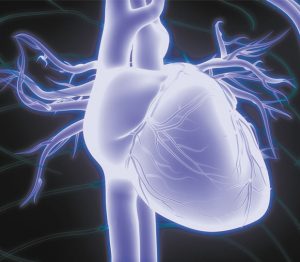By Dr. Aneley Yegezu Hundae, M.D., FACC
 Aortic aneurysms, a potentially life-threatening condition, silently jeopardize the health of thousands worldwide. This article delves into the intricacies of aortic aneurysms, exploring their origins, risk factors, symptoms, diagnostic methods, and the array of treatment options available. By unraveling the complexities of this condition, we aim to empower readers with knowledge that could potentially save lives.
Aortic aneurysms, a potentially life-threatening condition, silently jeopardize the health of thousands worldwide. This article delves into the intricacies of aortic aneurysms, exploring their origins, risk factors, symptoms, diagnostic methods, and the array of treatment options available. By unraveling the complexities of this condition, we aim to empower readers with knowledge that could potentially save lives.
Understanding Aortic Aneurysms
At its core, an aortic aneurysm is a ballooning or enlargement of the aorta, the main artery that carries oxygenated blood from the heart to the rest of the body. Often, these aneurysms develop slowly over time, going unnoticed until they reach a critical stage. The dilation weakens the walls of the aorta, and if left untreated, it can lead to severe complications, such as aortic rupture.
Risk Factors
Aortic aneurysms are not discriminatory; they can affect anyone. However, certain factors increase the likelihood of their occurrence. Genetics play a significant role, as a family history of aortic aneurysms can elevate an individual’s risk. Smoking, high blood pressure, and age are also key contributors. Men over the age of 60, especially those with a history of smoking and hypertension, face a higher risk.
The Silent Threat
One of the most insidious aspects of aortic aneurysms is their ability to progress without displaying any symptoms. This silent progression often leads to a lack of awareness until a critical event occurs. As the aneurysm enlarges, it may exert pressure on surrounding tissues or organs, causing discomfort or pain. However, these symptoms are not specific to aortic aneurysms, making them easily misattributed or overlooked.
Diagnosis
Early detection is crucial for managing aortic aneurysms effectively. Advanced imaging techniques, including ultrasound, CT scans, and MRIs, enable healthcare professionals to visualize the structure and dimensions of the aorta. Routine screenings are essential, especially for individuals with a family history of aortic aneurysms or those with known risk factors. Timely diagnosis can significantly improve outcomes.
Symptoms and Warning Signs
While aortic aneurysms often remain asymptomatic, certain signs may indicate their presence. Sudden, intense pain in the chest, abdomen, or back can be a red flag. Individuals experiencing such pain, especially those at higher risk, should seek immediate medical attention. Other symptoms may include shortness of breath, dizziness, and a pulsating sensation in the abdomen.
Treatment Options
The approach to treating aortic aneurysms depends on various factors, including the size of the aneurysm, its location, and the overall health of the patient. Smaller aneurysms may be monitored regularly, with lifestyle modifications and medication to manage risk factors. Surgical intervention becomes necessary for larger aneurysms, with two primary methods: open surgery and endovascular repair.
Open surgery involves replacing the weakened portion of the aorta with a graft, requiring a more extended recovery period. In contrast, endovascular repair is a less invasive procedure involving the placement of a stent-graft through small incisions. This method often results in a shorter recovery time and reduced postoperative risks.
Preventive Measures
Preventing aortic aneurysms involves addressing modifiable risk factors. Smoking cessation, maintaining a healthy blood pressure, and adopting a heart-healthy lifestyle can significantly reduce the likelihood of aneurysm development. Regular check-ups, especially for those with a family history or identified risk factors, aid in early detection and intervention.
Aortic aneurysms, though often symptomless, pose a substantial threat to cardiovascular health. By understanding the risk factors, recognizing potential symptoms, and embracing preventive measures, individuals can take control of their heart health. This comprehensive exploration serves as a guide, offering insights into the complexities of aortic aneurysms and emphasizing the importance of awareness, early detection, and proactive health management.
Dr. Aneley Yegezu Hundae, M.D., FACC invasive cardiology and advanced heart failure management
Dr. Hundae received his Premedical and Doctor of Medicine Degree from Jimma University School of Medicine. He completed his Internal medicine Residency at Mercer University School of Medicine. His Heart Failure/Heart Transplant fellowship at the University of Miami Cardiovascular Fellowship Program. Cardiovascular fellowship at Baylor University Medical Center.
Board certifications
• Cardiology
• Advanced Heart Failure and Transplant
• Nuclear Cardiology
• Comprehensive Echocardiography
• Internal Medicine
3161 Harbor Blvd, Suite A, Port Charlotte, FL 33952
(941) 235-8892
www.portcharlottecardiology.com








